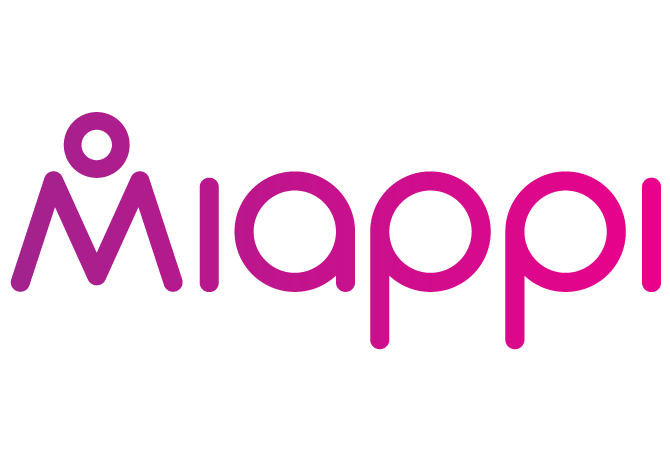User-generated content and the evolution of influencer marketing

But building trust is no easy task. Consumers are becoming more critical of brands’ ethics and business practices, with 74% citing their impact on society as a reason why brand trust has become more important.
Whereas in decades past, a good PR campaign may have been enough to develop trust among core demographics, today only 23% of consumers gain trust in a brand based on advertising, compared to 39% who do so from peer conversation.
This trend towards word-of-mouth advertising is not a recent phenomenon by any means. Still, the birth of social media has opened more lines of communication between brands and consumers and provided an opportunity for such conversations to be capitalised on.
Influencer marketing was identified as a solution to these trust problems in the late 2000s. But a decade later, we are seeing many businesses gravitate towards more authentic user-generated content, also known as UGC.
As this trend continues to build momentum, we consider the evolution of influencer marketing and how UGC fits into the equation for social-savvy marketers.
Influencer marketing versus user-generated content
The Cambridge dictionary defines an ‘influencer’ as ‘a person who is paid by a company to show and describe its products and services on social media, encouraging other people to buy them’. Influencer marketing is the act of a brand or business enlisting an influencer’s services to increase sales of their products.
UGC is earned media produced by a brand’s engaged, paying customers. Just like the content created by influencers, this can cover photos, videos, and text-based content, as well as artistic products, reviews and demonstrations. By comparison, it is cheaper, more authentic and allows real customers to become brand ambassadors for products that they love.

The origins of influencer marketing
Celebrity endorsements have been around for as long as celebrities themselves, with filmstars, singers and Santa partnering with brands to entice customers to buy. While more traditional media, such as newspaper ads and billboards were used at the time, the concept was the same. A celebrity was paid to endorse a product or service, and in doing so, transferred a slice of the trust and love they received from the public to the brand.
The bottom line is that celebrity endorsements influenced the public’s perception of brands and their purchasing decisions.
The evolution of influencer marketing
The rise of social media brought the birth of content creators, with content sharing and microblogging sites such as YouTube, Instagram, Tumblr and Blogspot providing a platform for aspiring writers, filmmakers, and artists to showcase their talents. Everyday people also joined in, sharing blogs or vlogs about their daily lives, covering everything from Primark hauls to reviews of new PlayStation games.
Many of those early to the party quickly developed a legion of dedicated fans, with people such as Zoe Sugg (Zoella), who filmed videos in her bedroom, suddenly finding thousands of like-minded individuals tuning in to hear their product recommendations.
Whereas generations past turned to agony aunts and magazines for advice, the internet allowed unfettered access to real people who were providing unfiltered reviews of the products they were using.
And people were buying.
Brand deals were born of a mutually beneficial relationship between these creators and brands. Content creators were able to monetise the content they were creating, and brands could piggyback on the trust they had built with their tight-knit audiences.
Sound familiar?
Many brands have built empires in part from influencer marketing, including makeup brand Morphe, mattress market-leaders Casper and watchmakers Daniel Wellington. What’s key here is that these brands have been smart with their marketing, investing in partnerships with large and small influencers that embody their brand ethos.
However, building a marketing strategy around capitalising on parasocial relationships can put influencers and brands in a precarious position, as a few wrong moves can quickly lead to a loss of trust.

Trust in the influencer-marketing category
Comparatively, niche influencers, or micro and nano influencers, tend to have much smaller followings. Nano-influencers average between 1,000 and 5,000 followers, and micro-influencers can see followerships of up to 100,000.
But are those with smaller audiences considered more trustworthy by fans?
When asked who they would consider to be a credible spokesperson for brand trust, 40% agreed that an influencer with a small following would be credible, with a smaller 34% deeming an influencer with millions of followers credible. Interestingly, a huge 59% would consider a person like themselves to be credible, second only to an industry expert.
There has been an undeniable shift in the way consumers interact with digital marketing in the past five years, with a clear desire for authenticity shining through. After years of consuming highly-produced content online, honesty and truth are a fantastic palette cleanser. While influencer marketing is still valuable – the category is expected to grow to be worth $13.8 billion in 2021 – there’s an undeniable disconnect between audiences and influencers. This is due to two factors; a lack of transparency in the industry coinciding with rising audience awareness and influencers’ loss of relatability.
Firstly, audiences are aware that influencers may recommend brands they have been paid to promote, despite never having tried the product. They may be sceptical of recommendations, despite not previously hesitating to add to cart.
This hasn’t been helped with developments in the industry moving faster than regulators have been able to keep up.
In the UK, the ASA has been fighting an ongoing battle for transparency. Influencers are now required to mark posts that feature either sponsorships, gifted products or affiliate links appropriately, whereas they weren’t several years ago. A 2019 study by the ASA found that ‘participants struggled to identify examples of influencer marketing and other forms of native advertising’, and many consumers felt they had been misled.
There has also been a crackdown on the use of beauty filters when advertising cosmetic products. In February of this year, the ASA ruled that filters should not be used on social media posts containing paid advertising if they exaggerate or improve the effectiveness of the product.
Secondly, influencers once regarded as relatable and trustworthy have lost a degree of authenticity, especially in the wake of lockdown. Major influencers with hundreds of thousands or even millions of followers are not only receiving free products from brands but are earning well above their average follower.
So, when an influencer who previously shared low-quality mobile phone selfies and responded to every comment on their post begins partnering with luxury brands their audience can’t afford to purchase, their lifestyle becomes one that leaves audiences feeling disconnected.
The COVID-19 pandemic only heightened the disparity between the average consumer and influencers as it became increasingly apparent that wealth played a factor in how individuals experienced lockdown.
All in all, an industry that was once rooted in trust and authenticity has been turned on its head. Major influencers are now seen by many to be aspirational, not relatable or accessible.
Yet, consumers still want to see real people talking about products online, with 53% of 16 to 24-year-olds beginning brand research on social media.
So, how can brands help facilitate this for consumers?
How user-generated content can provide brands with lasting consumer trust
Advertising that features consumer-generated content is 28% more unique and 31% more memorable than traditional advertising. – IAB
UGC is centred around the brand-consumer relationship. All content is created by engaged consumers, which can do wonders for relationship building, increasing brand trust in a challenging market, and bolstering sales.
To make the most of UCG, you need a platform that helps brands discover creators and unique content from all corners of the internet, including from TikTok, YouTube and Instagram. A platform that gives you the tools needed to license content curated from engaged fans, with the correct permissions and consent to use their creations in your marketing, is a game-changer. That’s your fans’ photos, videos and reviews on your website, social media and even OOH advertising.
There are plenty of brands that have been built on UGC. The Instagram feeds of some of the most desirable millennial brands feature content licenced from real-life customers and micro-influencers that love their products. Some of the best examples include Made.com, ASOS and Gymshark.
User-contributed content can also be incorporated into traditional advertising mediums such as television spots, print campaigns and OOH advertising. Two of the best known viral marketing campaigns, Apple’s long-running #ShotOniPhone and Coke’s Share a Coke, put UGC front and centre and yielded great results.
But why take the gamble?
This all comes down to trust. Nielsen Consumer Trust Index revealed that a massive 92% of consumers trust organic, consumer-generated content more than traditional advertising.
Authenticity is the new normal, and brands must embrace this at every step of the consumer journey in order to cultivate trust. After all, a brand’s target audience is likely to engage with content that features people they can relate to.

Miappi communities and consumer involvement
Our new Miappi Community platform launches in Spring 2021. Not only does this UGC platform support content discovery and facilitate communication with content creators and regular customers through social listening, but it can also help you build a managed brand community with new brand ambassadors.
Nurture a collaborative relationship with customers by providing creative briefs, listening to their feedback on products via surveys, and rewarding their engagement in ethical ways.
Ethical marketing is at the heart of everything we do, and there is no better way to build trust with your most loyal customers than by investing in their creativity and allowing them to play a meaningful role in your marketing campaigns.



